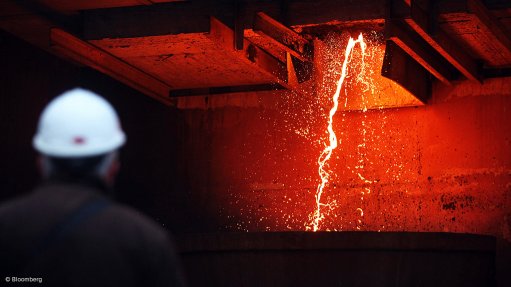
Photo by: Bloomberg
TOKYO – Mitsubishi Materials, Japan's third-biggest copper smelter, said on Monday it plans to produce 187 374 t of refined copper during April-September, up 7% from the same period last year.
The company expects output at its Naoshima smelter and refinery in western Japan to rise 11%, while production at its Onahama plant, north of Tokyo, will increase by 1%, it said in a statement.
The jump in Naoshima comes as the smelter has no maintenance plan in the first half of this financial year, a spokesman at Mitsubishi Materials said.
Mitsubishi Materials carried out 27 days of maintenance at its Naoshima smelter between March and April last year, and 21 days of maintenance at Onahama from October 21 last year. It plans to begin 30 days of maintenance from February 13 next year at the Naoshima plant and 25 days of maintenance from October 20 at the Onahama plant, in which it owns jointly with Dowa Holdings and Furukawa, the spokesperson said.
"Copper demand in Japan has been strong for automobile and semiconductor sectors," said the spokesperson.
Demand is expected to remain strong as construction is in full swing for the 2020 Tokyo Olympics and other redevelopment projects in Tokyo metropolitan area, boosting demand for electric wires, he added. Mitsubishi Materials plans to increase its gold output as it expects higher gold content in anode slime, a byproduct of copper concentrate processing that includes other metals such as gold and silver, to come from the Gresik smelter in Indonesia.
The smelter is run by PT Smelting, which is 60.5% owned by Mitsubishi Materials.
At the Naoshima plant, Mitsubishi Materials extracts gold and silver from anode slime, providing it with additional revenues. Following are details of the company's output plan, with comparisons against planned production in the second half of the financial 2017/18 year and actual production in the first half of 2017/18.